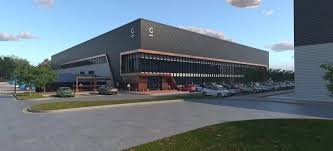Maersk Asia-Pacific Bulletin: Navigating Growth, Regulation, and Uncertainty

By Maria Kalamatas | The Logistic News
June 10, 2025 – Section: Maritime / Ocean Freight
Singapore – As the Asia-Pacific region enters the second half of 2025, Maersk has issued a regional bulletin outlining both renewed optimism and caution. The dual pressures of rising export volumes and evolving regulatory constraints are prompting the Danish shipping giant to fine-tune its operations across key Asian markets.
In its June update, Maersk highlights a steady rebound in trade flows, particularly from Southeast Asia and South Korea. Consumer electronics, semiconductors, and finished goods have driven much of the recovery, supported by ongoing demand in Europe and North America.
“Our volumes are trending upward,” said Anders Bjornsen, Regional Head of Network Strategy at Maersk Asia. “But the challenge is keeping pace without losing efficiency—or compliance.”
Among the top concerns: increasing port delays due to customs backlog, and tightening emissions regulations across multiple jurisdictions. From Vietnam’s new carbon reporting rules to stricter vessel efficiency standards in Japan and South Korea, carriers are under mounting pressure to reduce their environmental footprint.
Maersk is responding with several adjustments. These include:
-
Shifting select intra-Asia services to smaller ports with faster clearance procedures,
-
Expanding regional feeder networks to relieve congestion at major terminals,
-
Piloting low-sulfur fuel usage across specific corridors.
The company is also expanding its digital freight platforms to improve forecasting accuracy and inventory coordination for key clients across China, India, and Australia.
“Visibility is no longer a luxury,” said Leanne Mok, a Hong Kong-based logistics analyst. “It’s the only way to manage lead time volatility without inflating costs.”
Still, uncertainty remains. Regulatory divergence between countries and geopolitical factors—such as Red Sea reroutings and Pacific trade tensions—continue to pose planning risks. As a result, Maersk is urging customers to adapt timelines and diversify transit options wherever possible.
With the summer shipping season approaching, Maersk’s Asia-Pacific strategy reflects a broader industry reality: growth is returning, but not without constraints. Success in 2025 may depend less on capacity than on the ability to manage complexity—port by port, rule by rule.
Maria Kalamatas
Senior Correspondent – Asia-Pacific Maritime & Trade
The Logistic News
The post Maersk Asia-Pacific Bulletin: Navigating Growth, Regulation, and Uncertainty appeared first on The Logistic News.
Share this post
Related
Posts
JP Morgan and Graftongate Invest £500M to Reinvent Last-Mile Logistics in Reading
By Maria Kalamatas | The Logistic NewsJune 11, 2025 – Section: Business / Urban Logistics In Reading, UK, a quiet industrial...
DP World Connects Cricket and Communities with ‘Beyond Boundaries’ Launch at Lord’s
By Maria Kalamatas | The Logistic NewsJune 12, 2025 – Section: Business / Strategic Partnerships London, UK – When logistics meets...
Adani Ports Aims to Double Revenue by 2029 in Aggressive Expansion Drive
By Maria Kalamatas | The Logistic NewsJune 12, 2025 – Section: Business / Port Development Mumbai, India – Adani Ports and...
Seventeen Bongos Take Flight: DHL Delivers Endangered Antelopes to Kenyan Sanctuary
By Maria Kalamatas | The Logistic NewsJune 10, 2025 – Section: Air / CSR & Special Transport They left Florida before...



